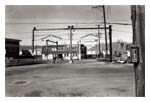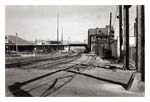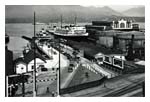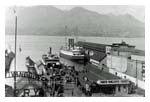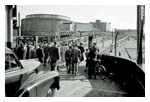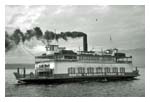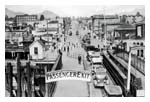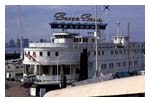
|
NUMBER 20
|
WINDSOR STATION - MONTREAL
|
SEPTEMBER 1st, 1937
|
Sees World from Tower Prison
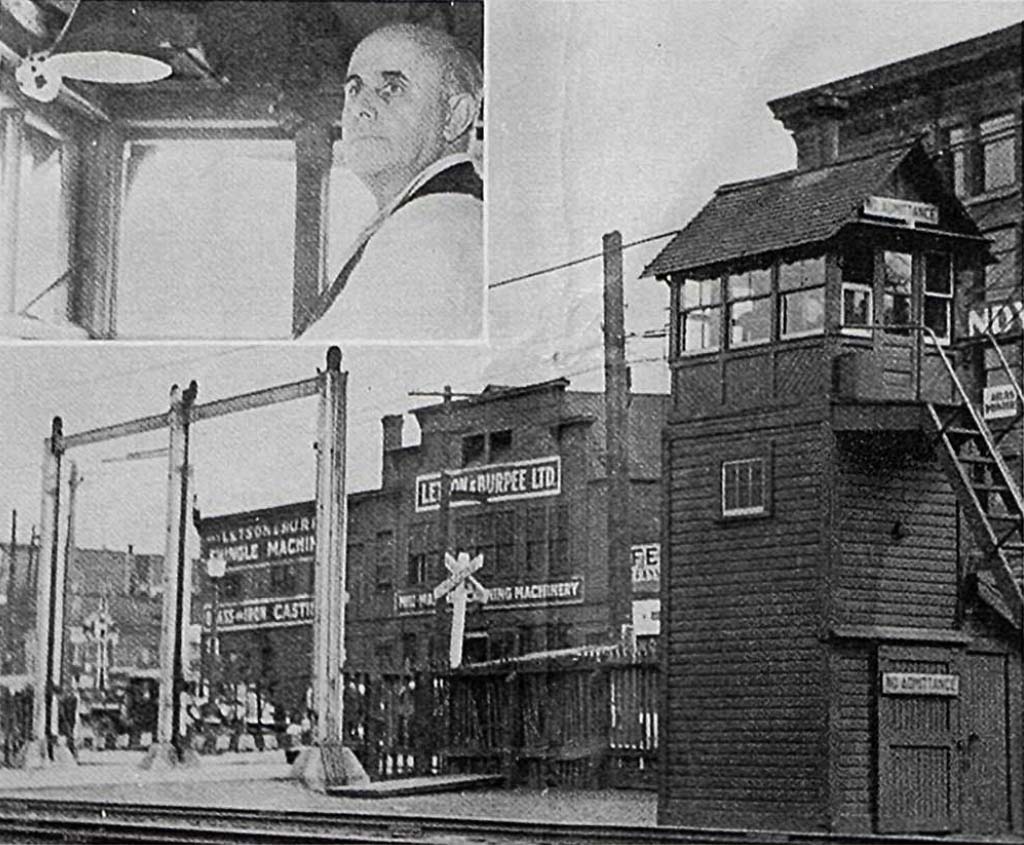
Gateman's Greatest Hazards
Perched twenty-five feet in the air above one of Vancouver's trickiest series of level crossings, George Sims Johnstone, signalman at Columbla Avenue crossing, has unique opportunities to study human nature.
His tower "prison" is a grandstand seat at the passing parade and the control board in front of him controls seven gates through which pour automobiles, trucks, wagons, and foot passengers. These gates, if you will believe a veteran of 21 years are designed to "protect people from themselves".
Pedestrians Worst
"Foot passengers give us the most trouble," he said, "and of pedestrians the women and children are the worst. It's something like marine life, I guess, this business of women and children first, at any rate, they try to be first through, over, or under the gates."
Truck drivers, with whom motorists are inclined to saddle a reputation for surly single-purposed driving, regardless of the other fellow, are thereby much maligned, the genial signalman stoutly maintains.
"Truck drivers depend on safe driving to keep their jobs. We find it's the fellow in his own car, or one maybe borrowed from a trusting friend, who does the haywire driving," says Mr. Johnstone. "The same goes for taxi drivers."
But pedestrians! They are the bane of the gateman's life.
Gates raised and lowered by Mr. Johnstone, and his two colleagues at the Columbia Street crossing, bar driveways from Vancouver's busy waterfront streets to the docks of the Union Steamship company which operates coastal ferries to many parts of British Columbia, to the docks and warehouses of the huge Evans, Coleman, & Evans company, to the slips of the North and West Vancouver ferries which carry passengers and goods to and fro across the Inlet from Vancouver to North Vancouver and West Vancouver, and to the docks of the Canadian National Railways, at the foot of Main street.
Seven Gates to Lower
There are seven gates, electrically controlled from a tower switchboard presided over from eight a.m. to four p.m. by George Sims Johnstone, from four p.m. to midnight by the Scot, Robert Halliday, and from midnight to eight a.m. by Alfred Edward Burchall.
Sometimes, however, the job is by no means as simple as standing in the many-windowed tower and pushing buttons, listening to bell signals. Sometimes fog throws a well-nigh impenetrable mantle over the waterfront and the signalman must climb down from his aerie to flag the crossings with the help of sectionmen.
Busiest hours are from seven to 11 a.m. when the "Mountaineer" Trains 3 and 7, and the Kettle Valley train, No. 11, come in from the east and when No. 2 departs for the east, and again in the evening from six to 8:30, a period which sees the departure of the "Mountaineer", Trains 4 and 8. and the Kettle Valley, No. 12. No. 2, which rolls in at 10:30 p.m. finds a comparative breathing spell.
This is not to hint, however, that other periods in the day are listless and draggy. Switch engines, there are usually at least four of them in the offing, chug up and down, in their endless tasks, and the gates lower and raise regularly.
Morning and Evening Rush Hours
Rush hours come in the morning when the Union boats dock in squads, Monday morning when the week-enders return from up-coast points is a high pressure period, and again at night when the crowds surge to North and West Vancouver ferries, and to departing Union boats. From seven to nine a.m. is naturally a busy time at the ferry crossings.
"I guess we are the most discussed and cussed men in Vancouver," Signalman Johnstone says. "I know when I'm coming to work just before eight every morning I pass ferry passengers whom I see every day, and they'll hardly look at me or speak to me. They don't like to be held up and we get the blame for it."
There is a subway leading from Cordova street to the ferry dock designed for pedestrians, but the ferry passengers would rather walk across the tracks than under them, hence the gates must rise and fall like the tides, and just as inexorably.
Life in the Raw
"You see a lot of life, here." he continued, "even if you can't get out and share it. You get to know the steady patrons, the old timers, and you can spot a stranger every time. He'll come along, hesitate, see the sign directing him tc the subway leading to the ferries, start down the subway, and then he'll see the crowds pushing across the roadway over the tracks. Then he'll back up, figuring he's on the wrong track, and sooner or later he'll be up on the level again crossing with the crowd. That's life, I guess."
Mr. Johnstone was at the Columbia Street crossing tower when it was installed in 1914, worked there until late in 1915 and then he enlisted with the 72nd Seaforth Highlanders, C.E.F., and didn't return until 1919. He has been in the tower ever since his return from overseas. Cooped up in the tower for a stright eight hours daily, he naturally needs some recreation and he finds it in the 72nd Seaforth's Association, and is still with the battalion on a militia basis as a quarter-master sergeant. Like Johnstone, Robert Halliday and Alfred E. Burchall are returned soldiers. Hall:day served with the Imperial forces with which he was a reservist at the outbreak of war, while Burchall found his billet with the 7th Battalion, C.E.F.
To them the tower is home, and just as snug as any dugout they were able to find in France during the late big war.
"And so far," says Signalman Johnstone, crossing his fingers cannily, "we haven't had an accident."
This Staff Bulletin article is copyright 1937 by Canadian Pacific Railway Limited
 and is reprinted
here with their permission. All photographs, logos, and trademarks are the property of the Canadian Pacific Railway Company.
and is reprinted
here with their permission. All photographs, logos, and trademarks are the property of the Canadian Pacific Railway Company.